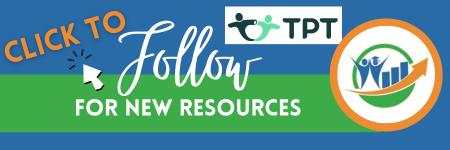What is PBIS (Positive Behavior Interventions and Supports)?
- Dianne McKinley
- Nov 5, 2018
- 3 min read
Updated: Jul 29, 2024

Many schools across the US are finding it hard to deal with student misbehavior. And usually, students are punished for not knowing how to behave rather than being taught appropriate behavior. The objective of Positive Behavior Interventions and Supports (PBIS) is teaching positive behavior. You may be asking, “What is PBIS?” This article will answer that question.
What is PBIS?
The educational research community developed PBIS to eliminate or reduce poor behavior school-wide through encouragement of positive behaviors. PBIS aims to create a positive school climate wherein students can learn and grow.
However, changing the school climate can be challenging. School climate can vary from school to school and can be affected by factors such as location, student diversity, instructional methods, and school administration. Employing PBIS can make that task more manageable. For PBIS to produce favorable results, it needs to be implemented school-wide and with consistency.
How to Implement PBIS
Some educators think that PBIS is simply a behavioral program. Actually, it is more than that. It’s more accurate to see PBIS as a framework that is focused on prevention and instruction. PBIS aims to change how schools employ interventions and discipline. By building on positive behaviors, incidents of misbehavior escalating into disciplinary measures can be reduced. Click here to see The PBIS Team Handbook: Setting Expectations and Building Positive Behavior.
The 3 Tiers of PBIS

PBIS uses a 3-tier approach. Each tier can be applied to specific students.
Tier 1 – Universal Prevention
A majority of PBIS supports fall within Tier 1. This involves outlining the positive behaviors that should be established. Positive behaviors can include simple actions such as walking in line, proper garbage disposal in the cafeteria, or keeping a tidy locker. When students and school staff focus on behavioral goals, negative behaviors will lessen. Because teachers spend less time on disciplining students, the instructional time increases. Typically, 80% of students don’t need to move beyond Tier 1.
Characteristics of Tier 1:
Schoolwide
For all students and staff members
Designed to lessen problem behaviors
Increases instructional time
Tier 2 – Secondary Prevention
Tier 2 addresses at-risk behavior. It is meant for students who struggle with Tier 1 interventions and supports. This tier focuses on specific groups of students and also the underlying issues that may be causing negative behavior. Aside from academics, disruptive students may be dealing with emotional or social issues that may lead to poor behavior in the classroom. Interventions identify these causes and provide support in changing bad behaviors. Roughly 15% of students require Tier 2 interventions.
Characteristics of Tier 2:
Group supports for some students
Prevents worsening of problem behaviors
Specialized interventions for students demonstrating at-risk behavior
Tier 3 – Tertiary Prevention
In this tier, students who don’t respond to Tier 2 interventions receive individualized supports. Tier 3 interventions are for students who exhibit high-risk behavior. The objectives are to reduce problematic behavior and increase adaptive skills.
The individualized plan may include efforts by school psychologists or special education teachers. Usually, less than 5% of students will need Tier 3 interventions.
Characteristics of Tier 3:
Individual support for students
Designed to lessen the severity of ongoing problem behaviors
Specialized interventions for students with high-risk behaviors
Assessing the Effectiveness of PBIS
Schools using a PBIS framework aim to improve school climate and reduce office discipline referrals. But implementation of PBIS is only one part of the equation. The other part is assessment. As a school implements PBIS, data begins to accumulate.
The assessment should revolve around a central question: is the PBIS framework delivering the desired results? Evaluating data allows the school to see what’s working and what still needs improvement. Therefore, PBIS requires training, resources, and time.
Benefits of PBIS

Adopting a PBIS framework school-wide has the following benefits:
Improves school culture
Reduces discipline referrals
Reduces suspensions
Builds social skills
Increases instructional time
Improves classroom management
Increases student engagement
Improves academic performance
Improves school safety
Conclusion
Many students don’t have the social and emotional skills needed to be successful in the classroom. Punitive measures are not effective in the long-term. But in an environment where positive behaviors are taught and recognized, the students can grow in school and the community.
Implementing a PBIS framework can bring positive change to the overall school climate. Students learn more, teachers are happier, and the whole community will benefit. After knowing what is PBIS, all that’s needed for a successful implementation is the willingness and cooperation from everybody involved.
Starting PBIS at your school? Here are some great resources:




